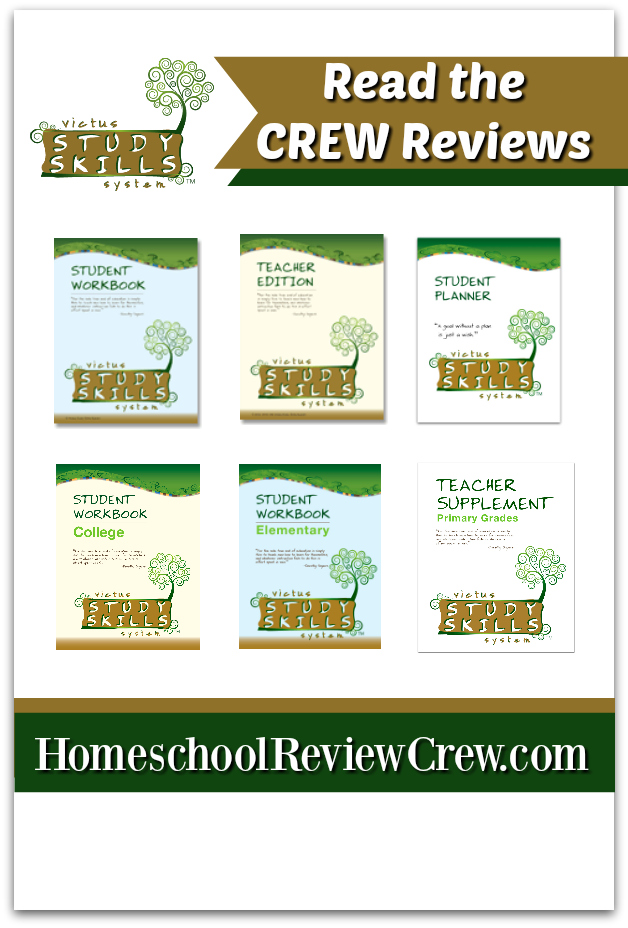In our homeschool, we were able to use Levels 1-4 of the Victus Study Skills System. Here’s how we used it and my recommendations for making it work in your family.

About the Victus Study Skills System
The Victus Study Skills System was created with the goal of giving students the tools to be engaged and active learners who are therefore successful in their academic and life pursuits.
This quote by Dorothy Sayers is on the front of each book:
For the sole true end of education is simply this: to teach men how to learn for themselves; and whatever instruction fails to do this is effort spent in vain.
I can wholeheartedly agree to this goal as we homeschool our children! I’m not interested in cramming facts into their brains, only for them to pass a test. I am much more invested in giving them tools that equip them to be life-long learners. That is a valuable pursuit, and the Victus Study Skills System will help you with that goal.
How We Used It
We started out working altogether since the topics are the same, but with deeper content at each level. After the first two lessons, I worked individually with each child since I wanted to have personalized conversations with them about the material.
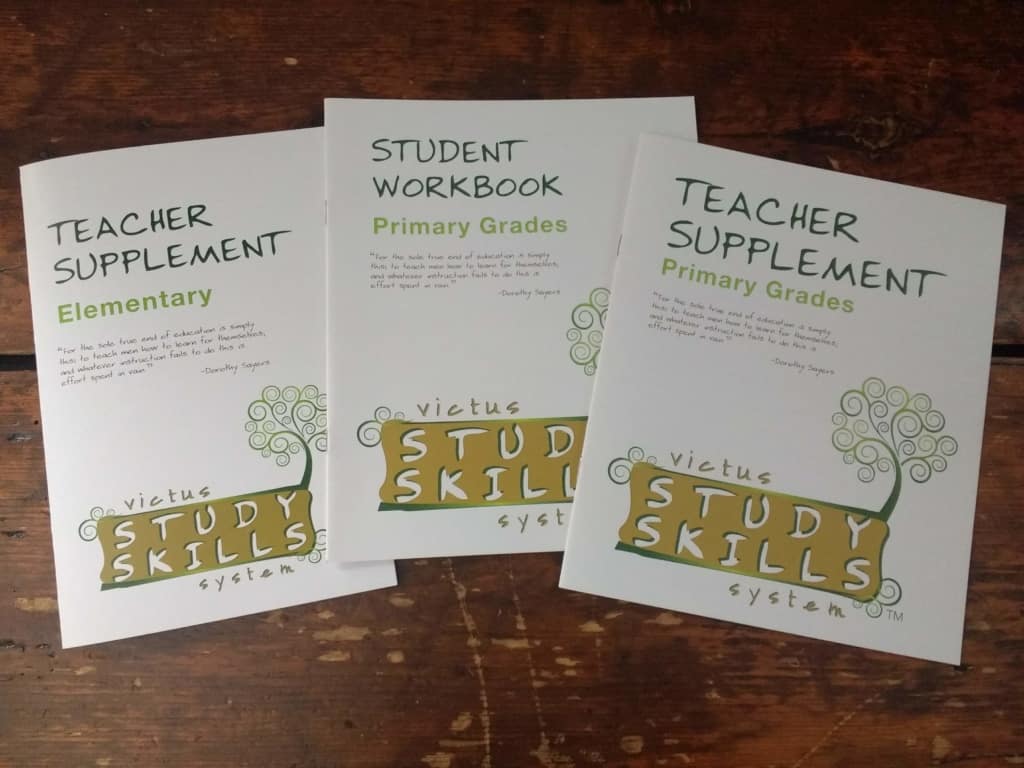
Level 1: Primary – K – 2/3
My daughter is in kindergarten, but I found most of the material in Level 1: Primary (K-2/3) geared a bit too much toward a traditional-school mindset, which my five year old does not understand. Her homeschooling experience has been flexible and mostly unstructured. So when the material talked about studying for a spelling test, doing homework, listening to your teacher when she is talking, or getting dressed in time for school, this content went right over her head. Because of that, we adjusted and were still able to make use of more general material such as:
- which senses she uses to learn best
- managing time so that she can get to bed when she’s supposed to
- previewing a book before you read it
- being a good listener with friends & family
The Primary Grades Teacher Supplement does give plenty of ideas for hands-on experiential learning.


For example, even though my 5 year old was too young to fill out the questions in the workbook, we were able to do some suggested activities. We completed the activity mentioned for Lesson 2 – How Do I Learn Best? Using her sense of touch, she tried to guess different objects I gave her. Then we discussed how she also needed to use other senses to completely describe the object.
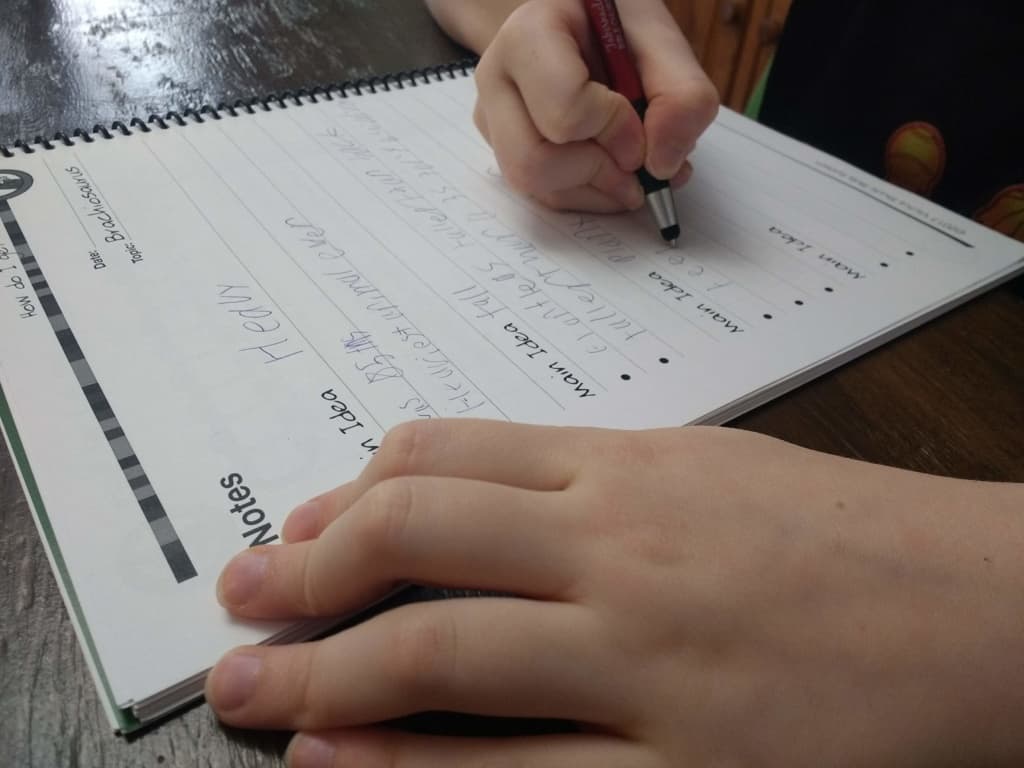
Level 2: Elementary – 2/3 – 4/5
We used Level 2: Elementary (2/3 – 4/5) material with a fifth grader. We completed the first and second lesson together with three older brothers. All four of my boys from fifth grade on up thought that the second lesson on learning strengths was hands-down the best! They were amazed at how accurately the specific learning styles described them. It was so very helpful for all of us (including me as the homeschool mom) to get a clear grasp on each kids’ unique way of learning. I already had a vague idea of their strengths and challenges, of course, but to name their primary and secondary learning strengths was long overdue.
Here’s how the learning strengths lesson progressed:
- the kids took a quiz to determine their style by marking sentences that applied to them
- they tallied the number of checks in each section to determine their strongest and second area of strength
- we read and discussed tips to build on these strengths
- we applied these strengths to specific examples of school assignments in the workbook
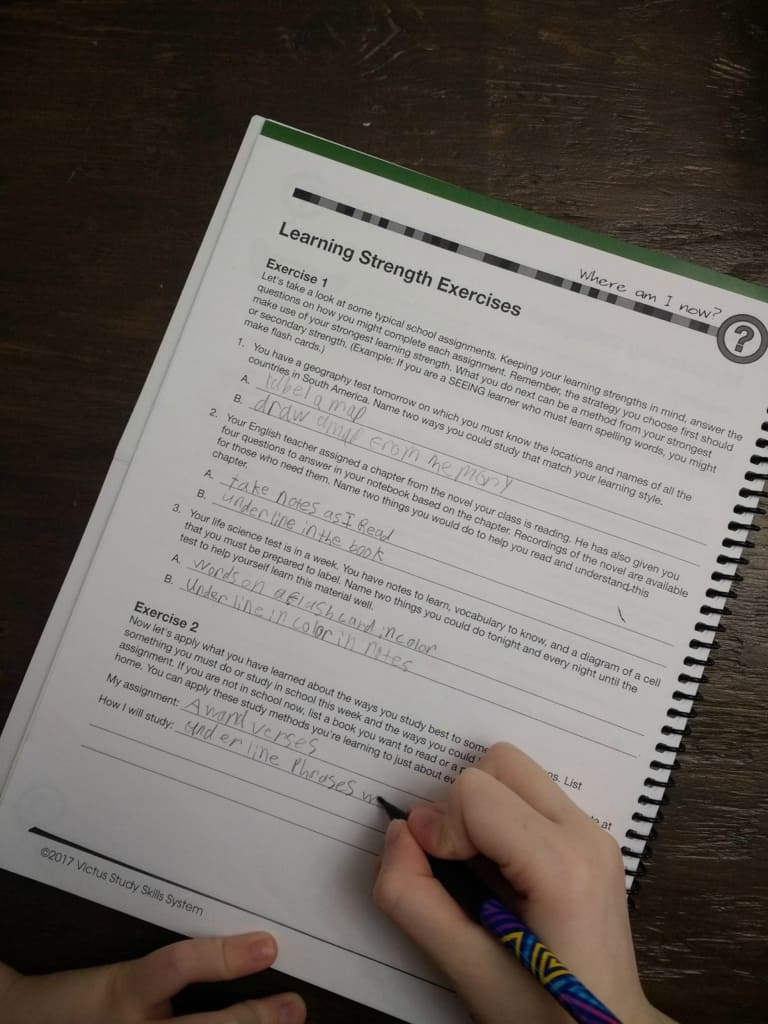
Some things that didn’t apply to my fifth grader’s homeschool experience were in the areas of taking notes from teacher lectures and school schedule management. These are not things that I require of my fifth grader yet, so we skimmed the material but didn’t dwell on it. This was in lessons 4, 7, and 8.
Lesson 6 discussed the PQRST method, which applies to taking notes from written material. Again, my fifth grader is not yet completing assignments that require him to outline textbooks, but in middle school he will be applying that skill, so this lesson gave us some advanced preparation with that.

Level 3: 5/6 – 10/11
My eighth and ninth grade sons completed Level 3: (5/6-10/11) of the curriculum. With this level, the Learning Strengths assessment and tips were considered by the students and myself to be the most valuable component. Of course, all of the lessons build on one another, so once students learn their primary strengths, they can then apply that information to later lessons in time management, organization, note taking, and test taking. It was helpful for both my eighth and ninth graders to be reminded of good note-taking techniques, as they are required to read a textbook and outline the text frequently.
Level 4: 10/11 – College
My tenth grader used Level 4: (10/11-College). This level included resources that we hadn’t discussed yet, but that I know will be essential to his success in college.
These resources include:
- time management in college
- sample syllabus
- discussion on breaking assignments down and scheduling them in your calendar
- discussion on the importance of worldview when understanding your own or responding to views that differ from your own
Highlights
The student planner is a great resource if you’re looking for a paper and pen approach to helping your students make plans, set goals, and schedule out assignments. Our family prefers online task management systems, so we were not able to make use of the student planner.
The teacher edition is clearly laid out with Purpose, Preparation, and Procedure sections.
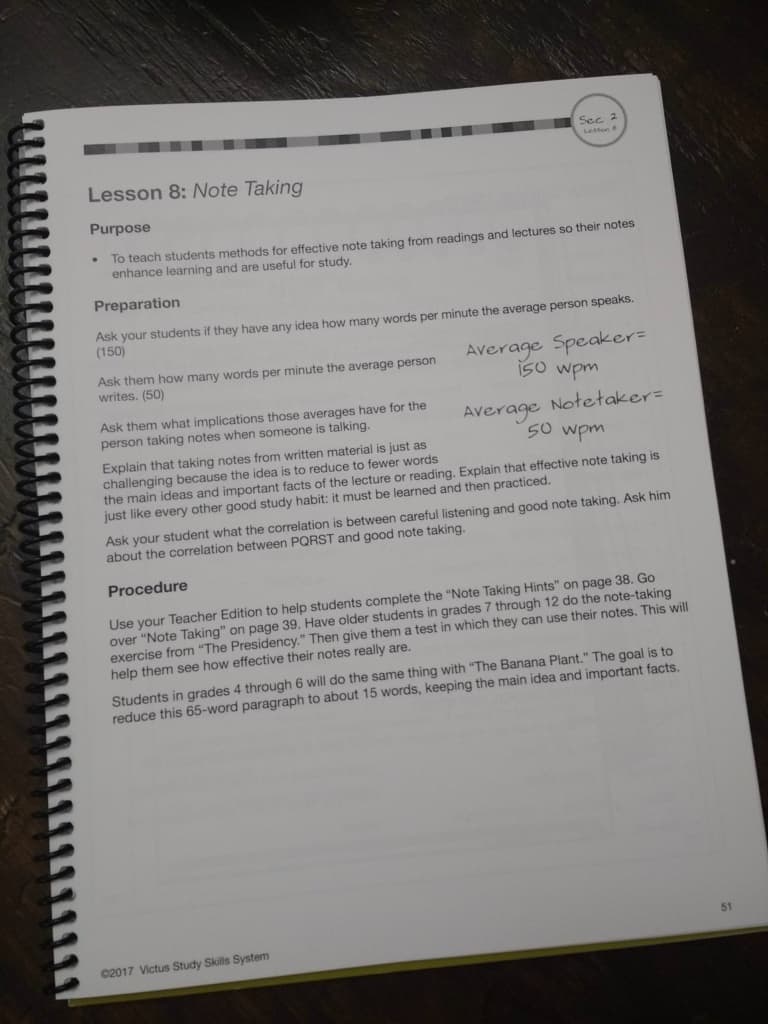
The Purpose section reminds you of the main goals of each lesson, including review of previous material.
The Preparation section gives you a scripted lesson plan.
The Procedure sections includes activities or applications of the material. These Procedure sections usually include fill-in-the-blank notes for the student or written worksheets pertaining to the lesson.
Examples of student pages are included in the teacher edition along with answers. The teacher edition is essential to being able to teach the material.
Recommendations
If you are homeschooling without a traditional approach of lecture, notetaking, and outlining textbooks, then you may need to adjust some lessons as I’ve already discussed. However, if your children will be learning these skills in middle or high school or in preparation for college, then you can use this curriculum to give them a head start on gaining these skills.
I would say that most homeschooled kindergarteners are too young to benefit greatly from Level 1.
Level 3 is the most beneficial age if you just wanted to use this material one time. I would recommend middle school as the peak time for this curriculum.
While I could technically teach all the kids together because the topics are the same, I personally found it easier to have discussions with each child separately to finish out the lessons because I could adapt the material for what I knew about their previous experience with study skills and what will be coming up in their academic careers.
Hop on over to read the rest of the Crew’s Reviews about this resource.
